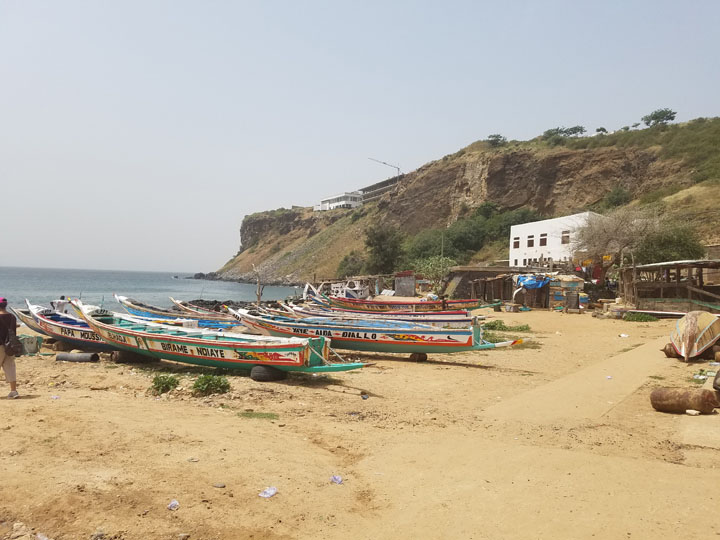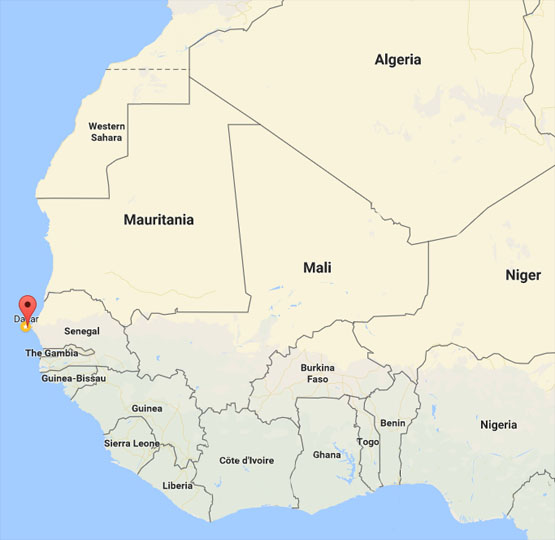One thing I always try to make time for when I visit Egypt is a boat ride on the Nile at Aswan. Many Nile cruise itineraries either begin or end at Aswan, so I’d recommend Continue reading “On the Nile Near Aswan, Egypt”
Tag: Island
Would I Go Back to Senegal?
Because of spending a month in Senegal in October 2017, I came to feel a real appreciation for the country and its people. Once I start to feel that level of connection, I find myself wanting to go back, and I do feel that pull to return to Senegal for a visit.
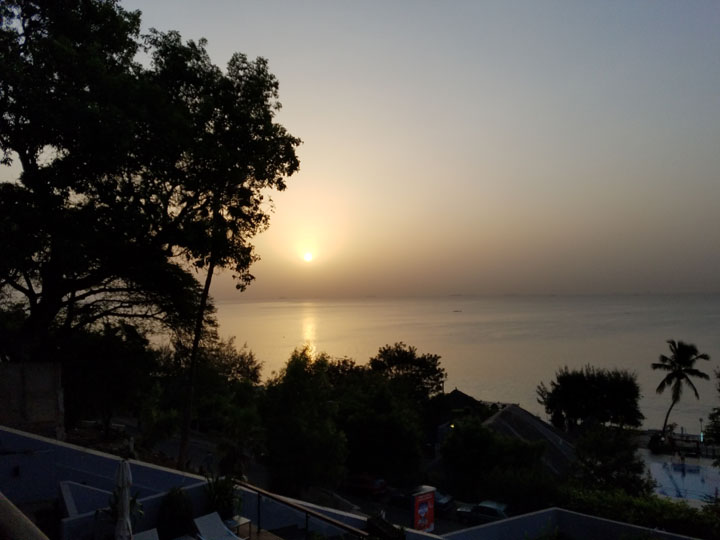
What would I do if I went back for a visit? This is my wish list. I really don’t think it would be feasible to do all of these things in a single visit, but I would enjoy doing what I can!
- Visit the local people that I had an opportunity to get to know during my month there. Reconnect, get an update on their lives.
- Return to Pink Lake with a swimsuit, and go for a swim in the salt water.
- Return to Terrou-Bi, which was the original hotel that we stayed at for our first two weeks in Senegal, before we had to change hotels. Go for walks at sunset along its stretch of beach.
- Dine at the seafront restaurants in the Almadies part of Dakar. That was something I was really fond of doing when I was there the first time!
- Go inside the African Renaissance Monument, and climb to the top to look out of the windows in the man’s crown.
- Seek out opportunities to see performances of sabar music and dance. Perhaps even take lessons in sabar dancing myself.
- Seek out a ndeup ceremony.
- Go back to Gorée Island, and this time allow a full day to explore the entire island.
Will I actually go? It’s hard to say. I’d like to have at least one travel companion that I can dine with, plan with, and share the experience with. I also would need to figure out how it fits into everything else going on in my life. For now, it’s on the back burner. But life can take interesting directions, and if the right opportunity were to present itself, I’d be happy to return.
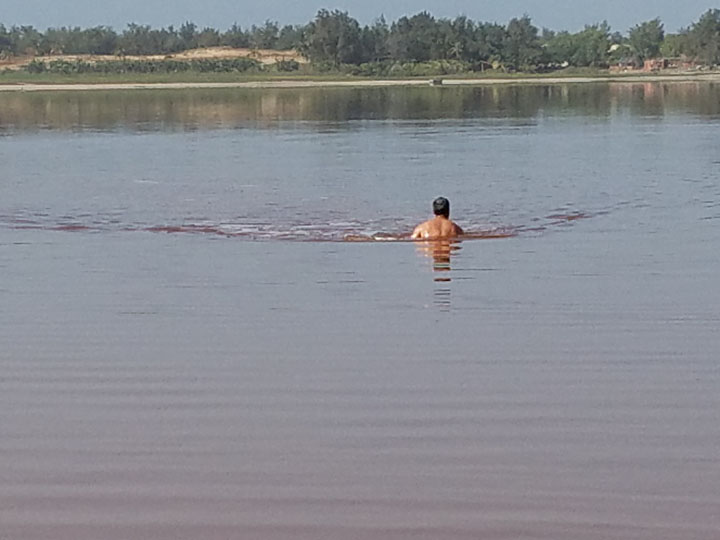
Gorée Island and the Door of No Return (Île de Gorée et la Porte Sans Retour)
Because of Dakar, Senegal’s location on the western tip of Africa as shown on the map above, it served as one of many ports along West Africa used in the trans-Atlantic slave trade from 1536 through 1848. Just off Dakar’s coast is Gorée Island, one of the locations where captured Africans were kept before loading them onto the ships. Its name in French is Île de Gorée. Academic sources differ in their views of how prominent Dakar and Gorée Island were in the slave trade as compared to other West African locations, but most agree that some level of trafficking did occur here. Today, this UNESCO World Heritage site stands to remind us of the atrocities of the African Holocaust.
Barack and Michelle Obama visited Gorée Island with their family in 2013. Nelson Mandela visited it in 1991.
Getting to Gorée Island
I went to Gorée Island on a Saturday, and found that it wasn’t a optimal day of the week to go. Many tour groups go there on the weekends, and consequently the process of touring the island and its historical sites can be a bit chaotic. Some of my coworkers opted instead to go on a Wednesday, and they enjoyed much lower crowd levels.
A ferry boat runs several times a day to take visitors to Gorée Island. On a Saturday, it’s important to arrive at the ferry ticket counter at least 45 minutes before the ferry’s departure time, because the lines to purchase tickets are quite long. If you don’t allow enough time, the ferry might leave while you’re still standing in line waiting to buy your ticket.
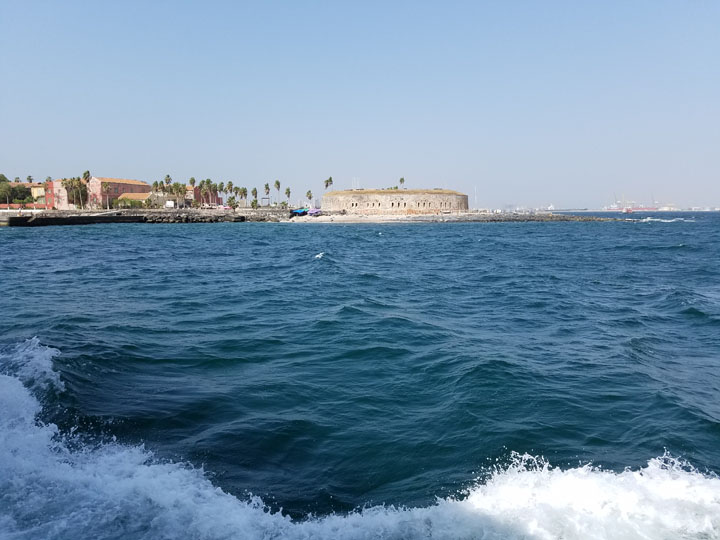
Reflecting on History
When the ferry docked, one of the first sights we came to was the Statue of Liberation. France gave this sculpture to Senegal in 2006 as a gift to commemorate the abolition of the slave trade.
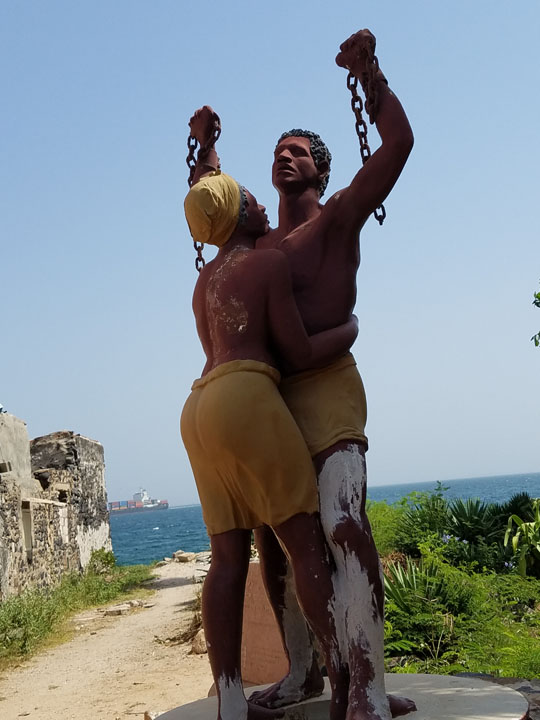
The House of Slaves (La Maison des Esclaves)
The primary feature that people visit on Gorée Island is the House of Slaves. This is a museum that memorializes the African people who were imprisoned there awaiting their passage to the West. Although the first record of slave trading at Gorée Island dates from 1536, the building that is known as the “House of Slaves” was built in 1776. It is the last remaining such structure on the island.
Some academic sources challenge whether this building was ever actually used for the slave trade. There is also a debate over how many people were shipped out from Gorée Island as opposed to other West African ports. I am not qualified to judge who is correct. Therefore, for purposes of this blog which is about my travels to Senegal, I will describe what the Senegalese people believe about their own history, which is that the House of Slaves was indeed one of the places used as a place to keep prisoners until they could be loaded on ships bound for the Western Hemisphere.
The building is a two-story structure. Wealthy European slave dealers lived with their families on the upper floor, while the captives lived on the ground floor in misery.
Holding Cells
According to the guides at Gorée Island, men were held in one cell, adult women in one, girls in one, and young children in a fourth. The photo below shows the room that was used for the men. Its dimensions are approximately 8 feet (2.6 meters) long by 8 feet wide, and up to 30 men would be crammed into it at once. The men would need to stand or crouch all the time, with not enough room to lie down or sit. The room contains no toilet facilities, and therefore its occupants were forced to live in their own filth.
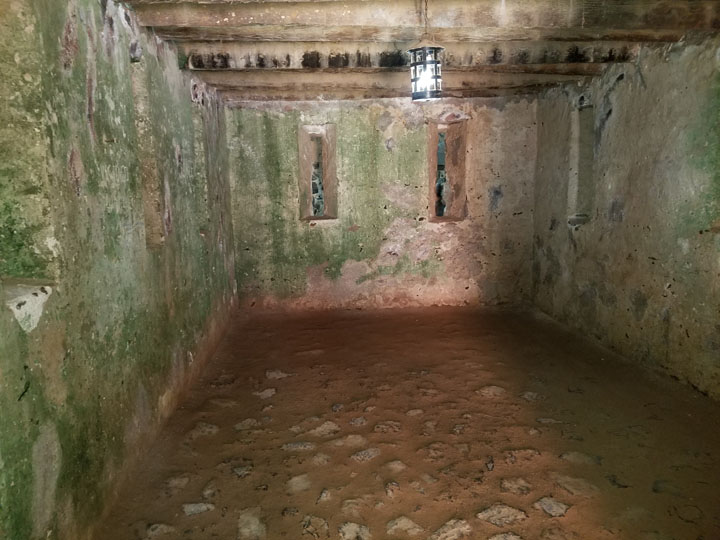
Parents were separated from their children. Adult women were held in one room, and young children in a separate cell for children. Young girls were kept in a special room with slightly better conditions than the others. Men would come to that room to select a girl for an evening of sexual assault.
All of the captives were kept chained and shackled, and fed once a day. The unsanitary conditions led to many problems with disease. The narrow windows allowed in very little light.
When I later read claims by some historians that enslaved people were never kept in the Maison des Esclaves awaiting passage to the West, I remembered gazing at the thick walls and narrow windows, thinking at the time how perfectly constructed they were to prevent escape. The architecture definitely brought to mind some sort of dungeon. Historians may be correct that this site hosted less trafficking activity than others in West Africa, but I believe there was some.
Prisoners who attempted to escape or rebel were moved to the “room of the recalcitrants” as punishment. This was a small, damp, windowless room that lay beneath a stairwell. The tour guides said that few made it out alive.
Historians estimate that prisoners were typically kept at the House of Slaves about 3 months before being loaded onto ships.
The Door of No Return (La Porte Sans Retour)
Tour guides at Gorée Island state that this door led to a wooden wharf used for loading the captives onto the slave ships.
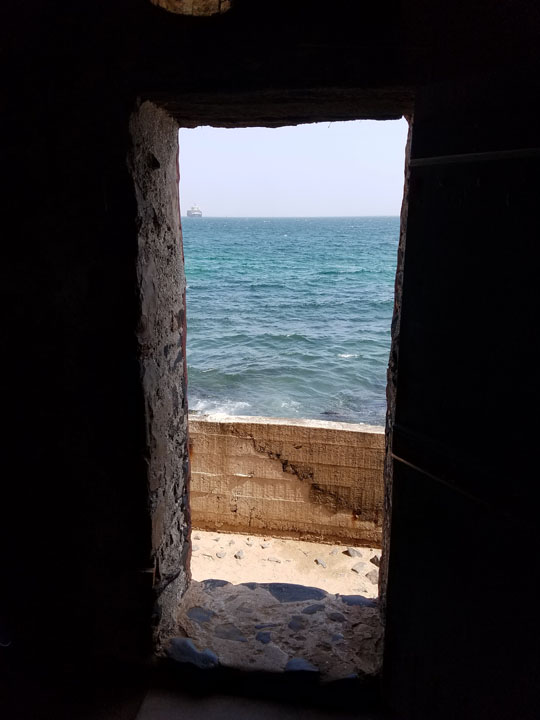
According to tour guides, as prisoners were led through this door and onto the walkway to the slave ships, they were shackled in pairs, each with a 3-pound iron ball attached to his or her leg irons. Prisoners who tried to leap off the walkway to escape would drag along the companions that were shackled to them.
A rocky beach (shown below) lies beneath the walkway. According to tour guides, if a prisoner managed to make it to the water, the iron ball would prevent them from swimming to freedom. Still, guides say some people did make the attempt, often choosing suicide as being preferable to the fate that awaited on distant shores.
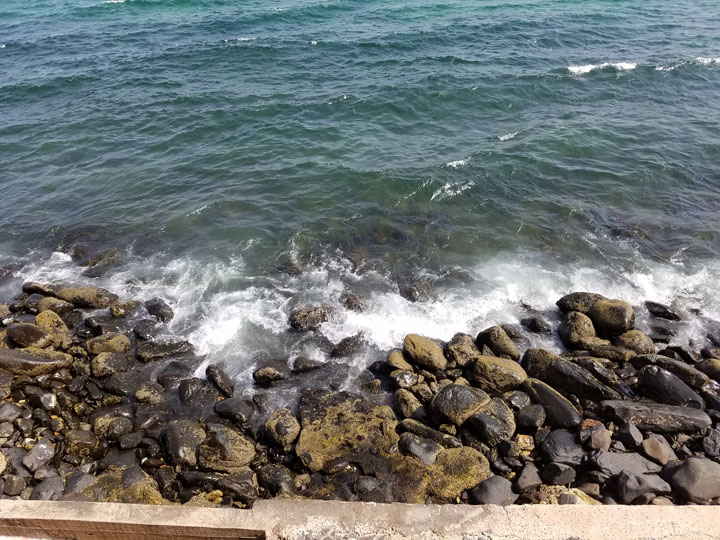
Closing Thoughts
There are many additional things to visit on Île de Gorée besides its House of Slaves museum. There are small beaches, picturesque colonial buildings, restaurants, and more. However, I did not visit any of these things.
While visiting the House of Slaves, I felt a strong sensation of oppression, of suffering. The last time I felt something like that was when I visited the concentration camp at Dachau, Germany. A feeling that great evil had happened there. I felt a very strong pull to get away, and return to the mainland. Was it lingering spiritual energy of those who suffered there in the past, or simply an overactive imagination? I can’t say. Whichever it was, it was strong enough to draw me to the ferry, without exploring the rest of the island.
Despite the debate by historians on this island’s history and role in the trans-Atlantic slave trade, I highly recommend it as a place to visit if you are visiting Senegal. I recommend walking through the House of Slaves, looking at the holding cells with their narrow slits for windows, listening to the tour guides, and gazing out through the Door of No Return. Doing these things brings a strong awareness to the history of the African diaspora that simply reading a textbook does not. It’s a place to reflect, and to honor the memory of those who suffered.
I hope someday to return to Senegal for another visit, and if I do perhaps I’ll return to Gorée Island to see the parts I didn’t visit on this trip.
In case you’re wondering why I was in Senegal for a month, I was there as part of the IBM Corporate Service Corps. You can read more about that here: https://roaming-jewel.com/2017/10/17/ibmcsc/
